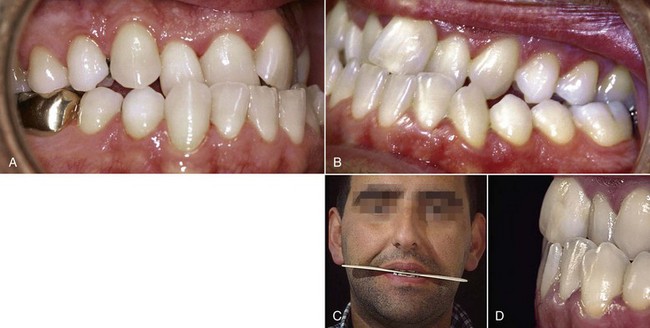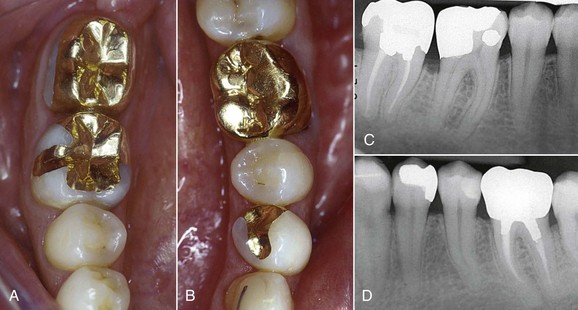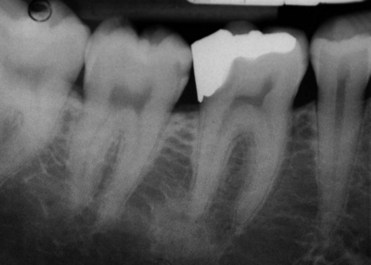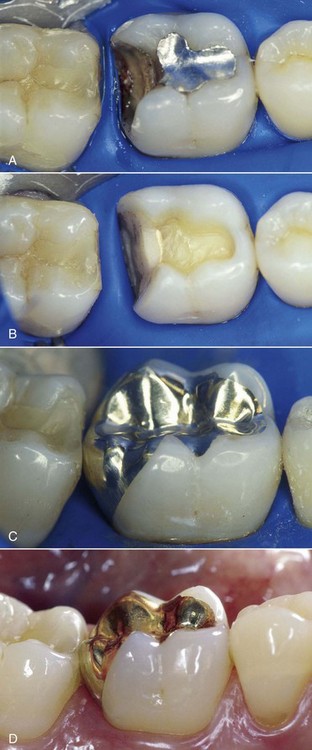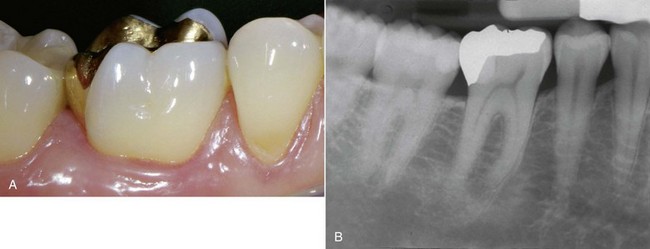Indirect Restorations in the Posterior Quadrants
Gold Inlays
Case Reports
Case Report 1
| Cavity | Large | |
| Cervical enamel | Yes | No |
| Vitality | Yes | No |
| Occlusal loads | Yes | |
| Esthetic concerns | Yes | No |
| Age | Adult |

Figure 11-2 Before and after.
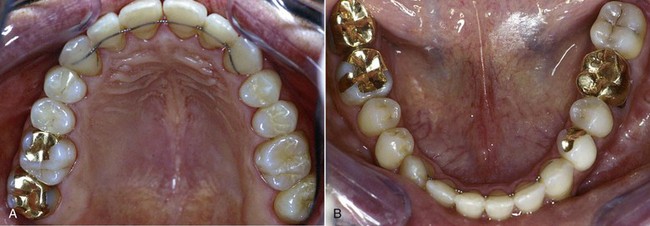
Figure 11-3 Gold inlays on teeth 2, 3, 21, and 30.
Case Report 2
| Cavity | Large | |
| Cervical enamel | No | |
| Vitality | Yes | |
| Esthetic concerns | Yes | No |

Figure 11-7 The clinical crown-lengthening procedure is performed with the patient under anesthesia.

Figure 11-8 The rubber dam is placed in the same session, followed by preparation of the buildup and the inlay.

Figure 11-9 The inlay can be cemented a few days later, creating the optimal condition for perfect tissue healing.

Figure 11-10 Checkup 4 weeks later.
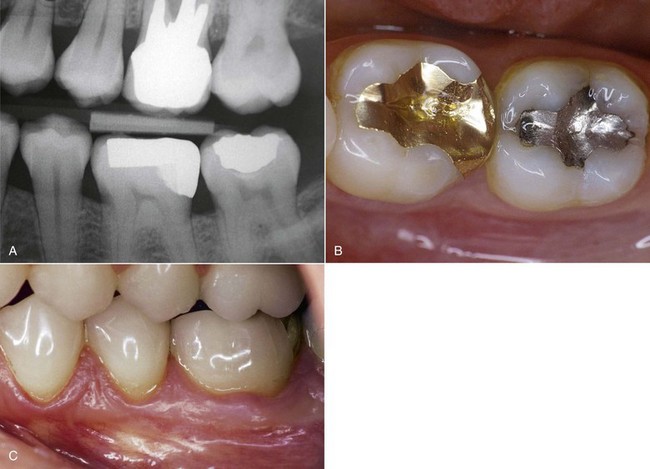
Figure 11-11 Checkup 9 years later.
Case Report 3
| Cavity | Large |
| Cervical enamel | No |
| Vitality | Yes |
| Esthetic concerns | No |
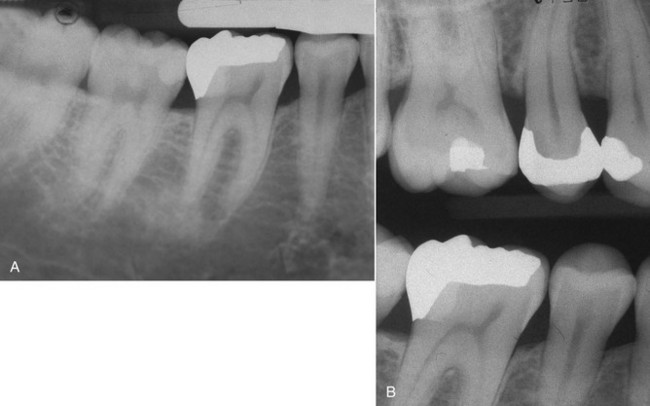
Figure 11-14 A, Radiograph after cementation. The comparison with the initial radiograph (Figure 11-12) shows that the invasion was caused by the faulty amalgam restoration. B, Radiographic checkup 5 years later.
Stay updated, free dental videos. Join our Telegram channel

VIDEdental - Online dental courses


